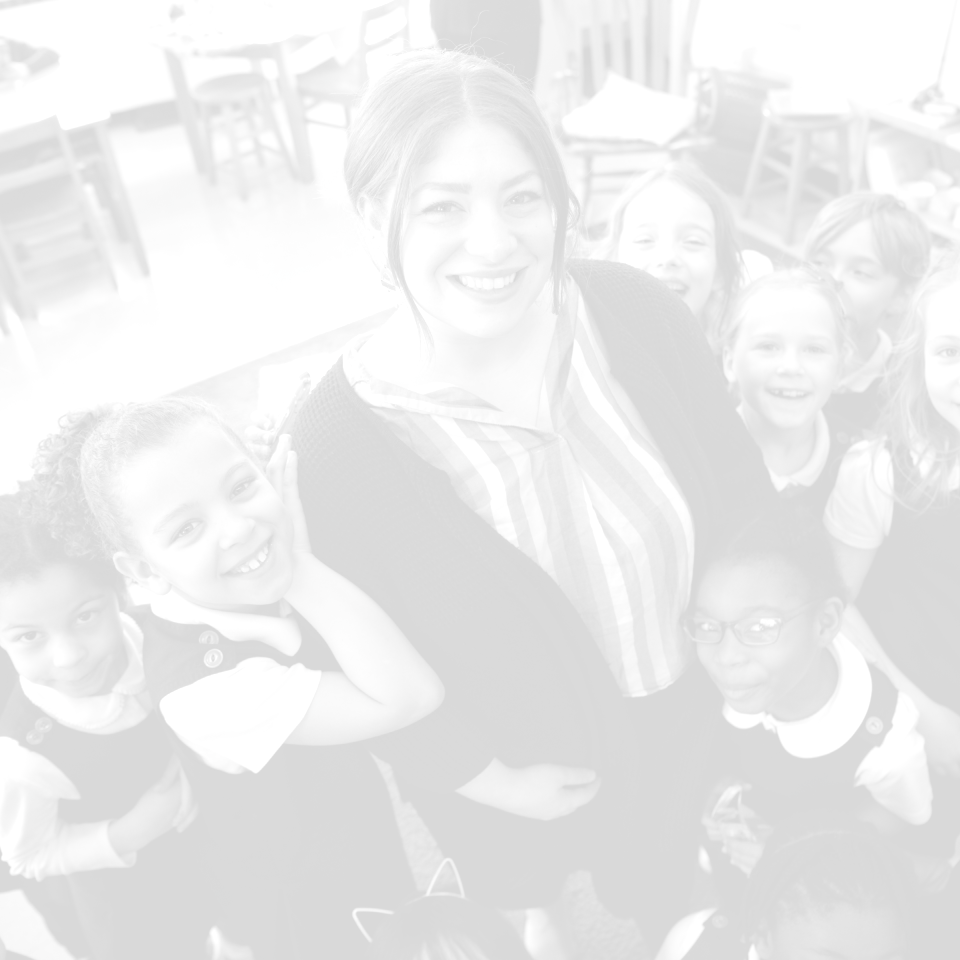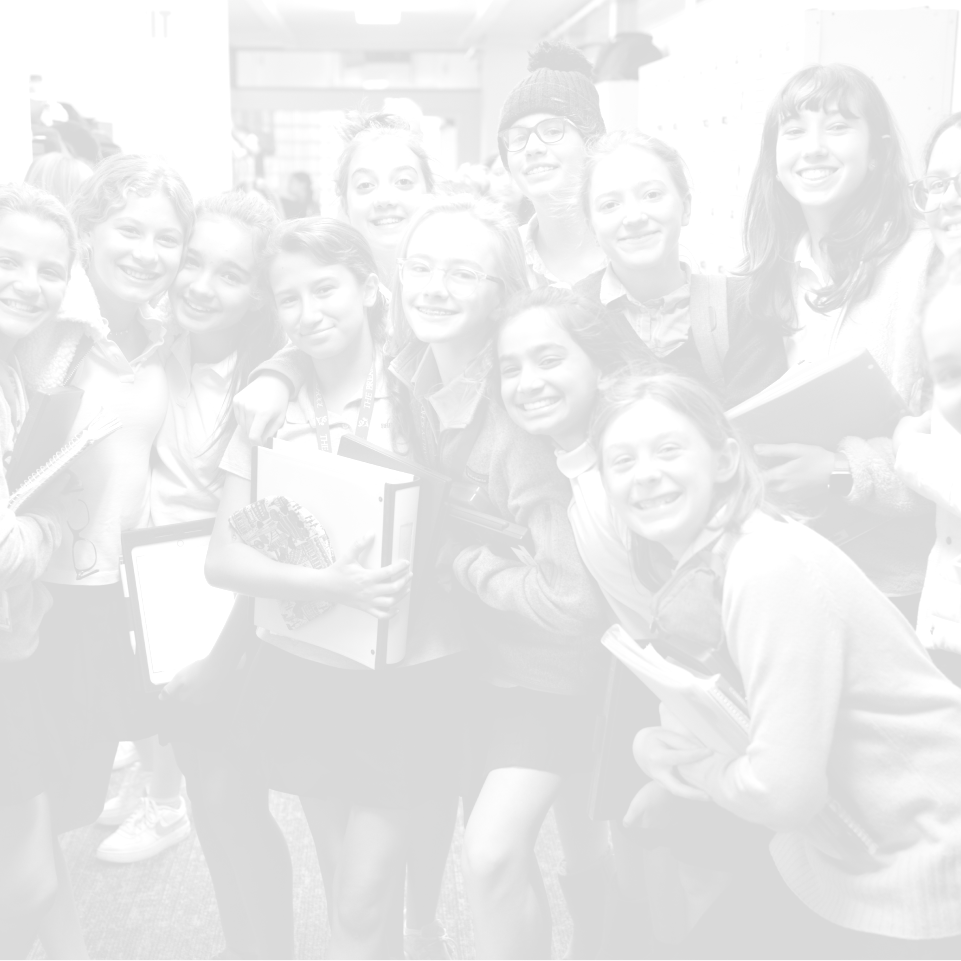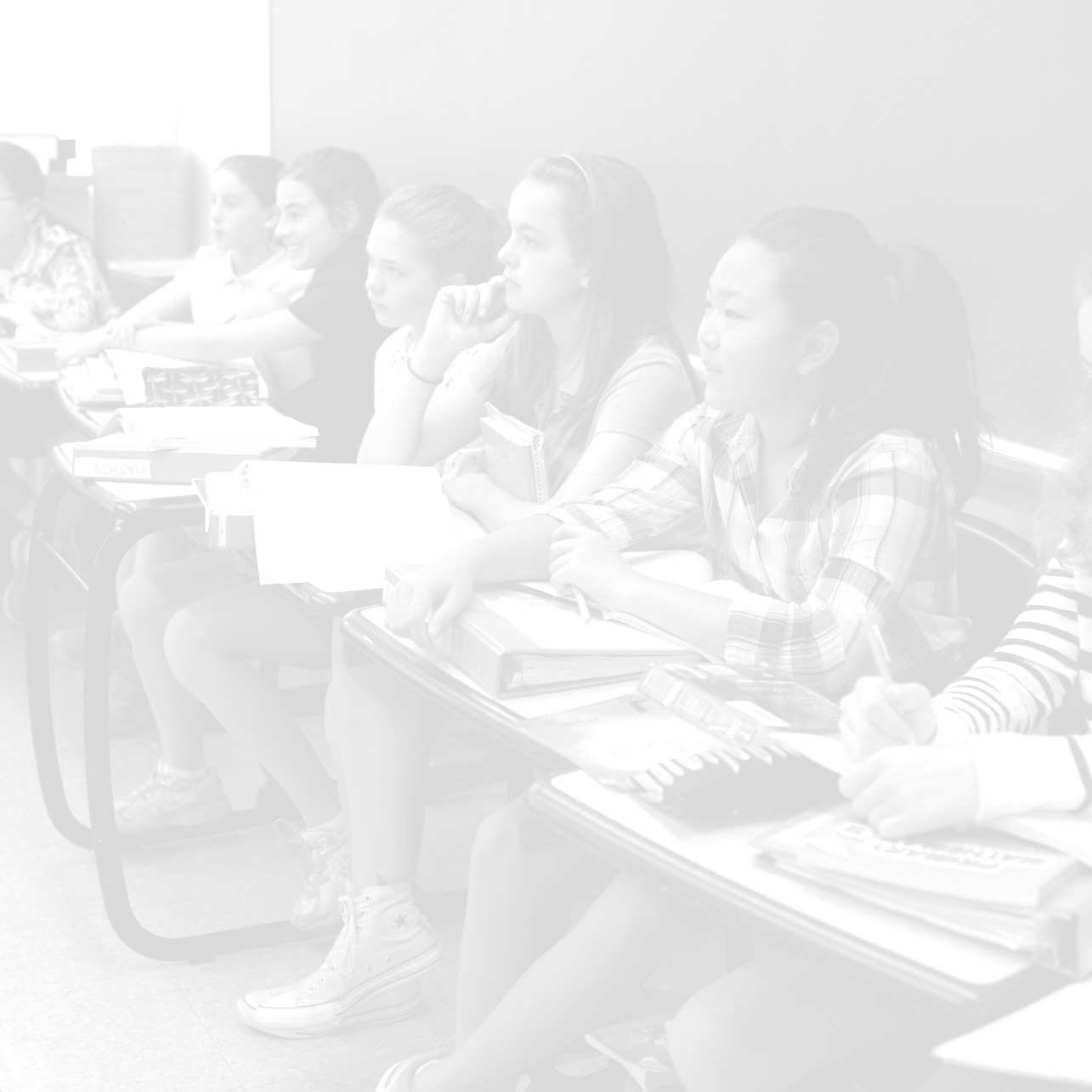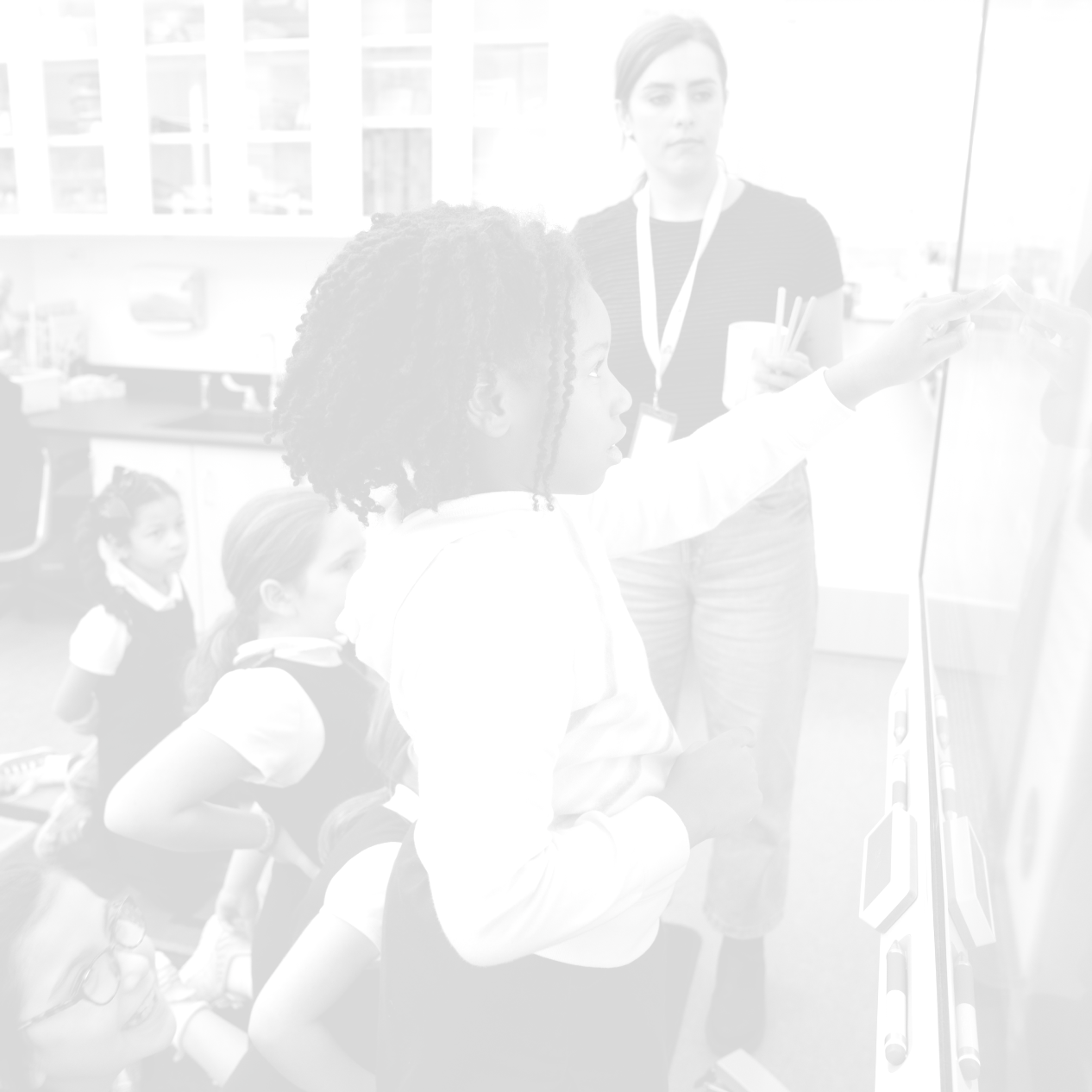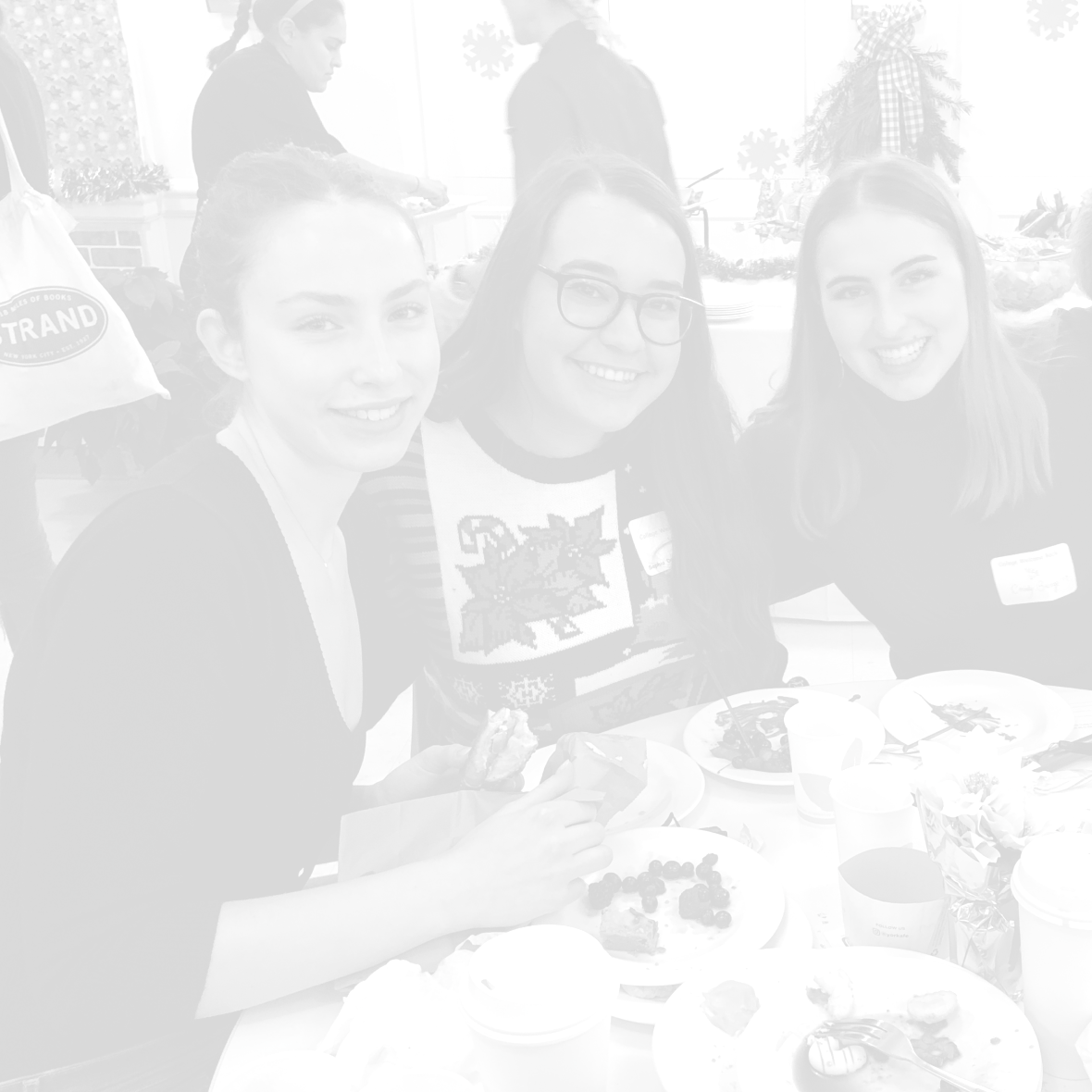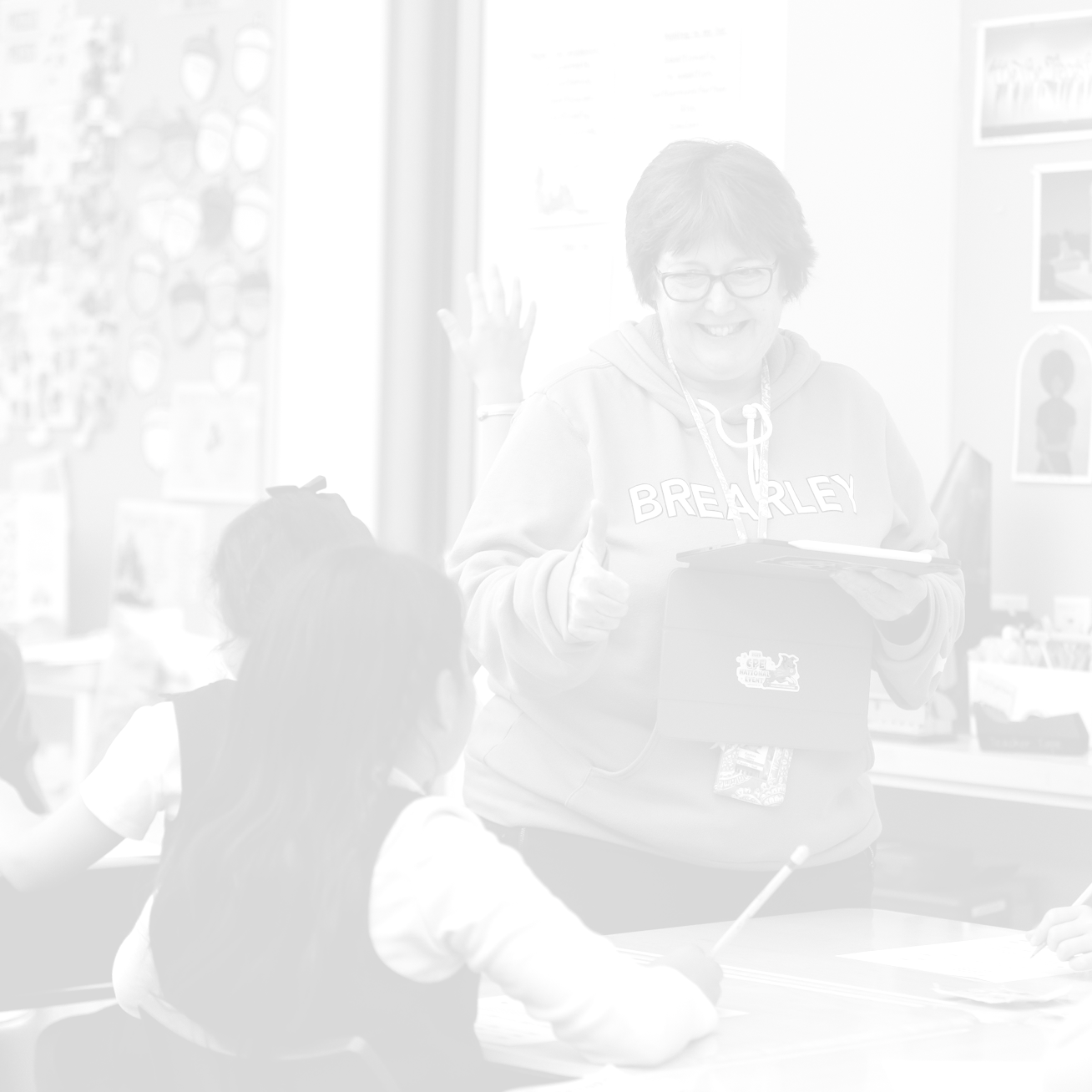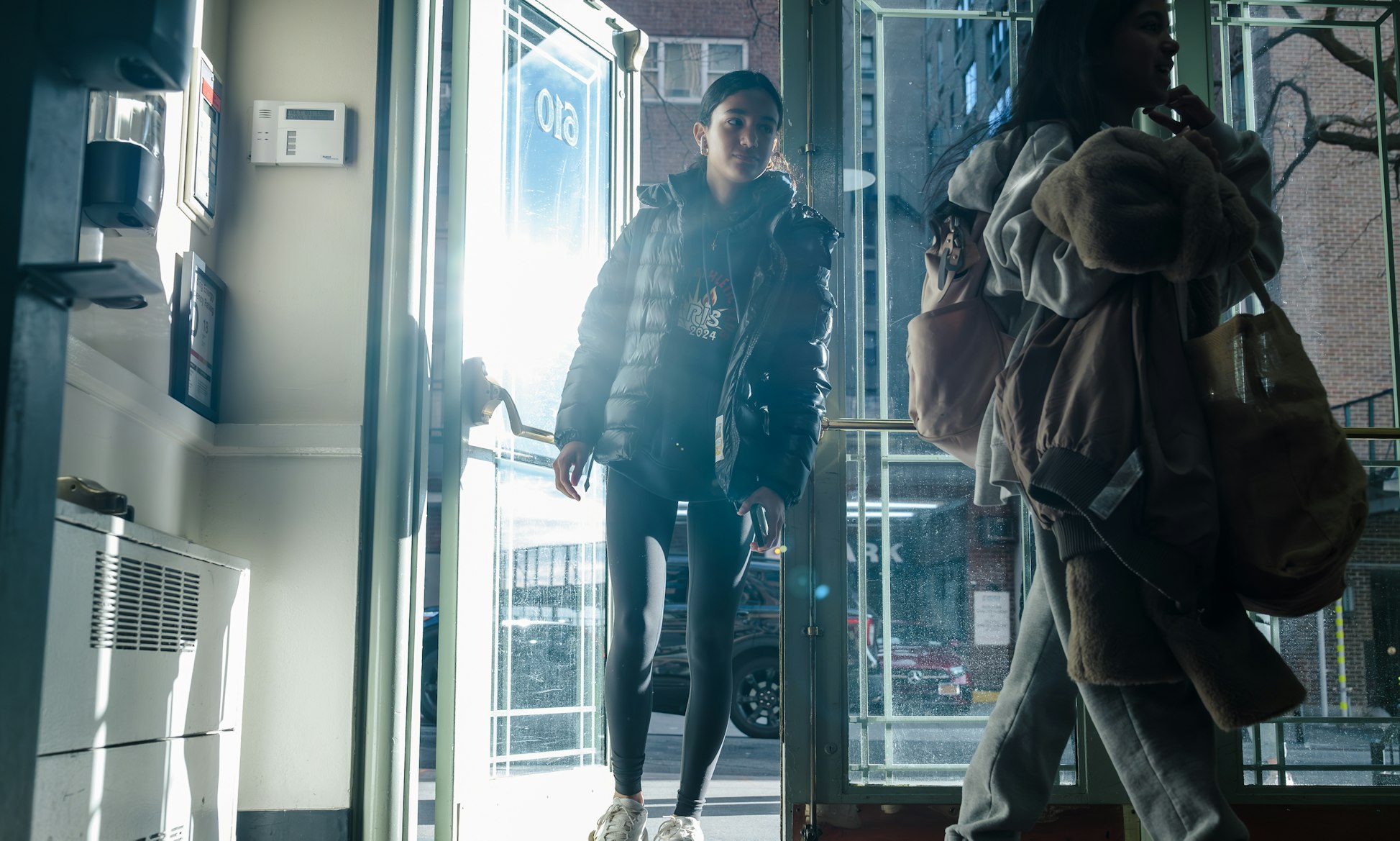
Stepping Through the Open Door
Our Strategic Vision
Brearley’s mission asks our students to wrestle with complicated ideas while supporting and uplifting each other to be the best version of themselves. It affirms the strong bond among all our students and alumnae, united by their adventurous intellect, diverse backgrounds and desire to create a better world. Its insistence on a larger purpose—engagement in and development of a strong sense of self, originality, and depth of thought and character—prepares them to act with courage and integrity and calls upon them to pursue their ambitions and address the issues of their generation. It is purposefully both inspirational and aspirational.
Read our updated Strategic VisionOver the last few years no topic has been discussed at greater length than how the Brearley community fulfills this mission for all its students. To guide this work, we chose to build upon the exceptional foundation of Opening Doors: A Strategic Vision for Brearley, which was adopted by the Board of Trustees in 2014. Since then, with the support of the community, the School has invested its energy and resources to meet these goals. These initiatives and projects span curriculum, the hiring, development, evaluation and retention of faculty, the physical plant, school finances and staffing and have impacted the experience of every student, faculty and staff member. Among our accomplishments, the School has:
implemented a K–XII external curriculum review process and reviewed Drama, Learning Skills, Library, Lower School, Math, Music, Science and Technology Departments;
re-envisioned and formalized its hiring, professional development and evaluation and professional growth programs to attract, retain and develop the next generation of faculty and staff;
designed and implemented a new schedule and homework policy to maintain the excellence of the program and encourage greater balance in students’ lives;
maintained its leadership position in compensation and financial aid;
created a campus by doubling its academic footprint with the construction of 590 and recently embarked on the renovation of 610 with a new library opening in September 2023;
standardized technology throughout academic departments and administrative offices;
completed a successful fundraising campaign for 590 and the 610 library and issuance of long-term debt;
established K–XII wellness, advisory and DEIA programs with enhanced staffing in these offices and dedicated time in the academic day;
increased student enrollment from 680 to 765 and faculty commensurately;
initiated computational thinking across departments and founded a first-of-its kind STEM program with NYU Tandon School of Engineering.
Most recently, we faced the challenges of the Covid-19 pandemic and the racial reckoning across our society. We worked responsibly and methodically to deliver its course of study safely and in-person for all students. The School also deepened its commitment to becoming an inclusive, antiracist and antibiased institution. We recognized the need to weave principles of inclusion and equity into our plans for the future to create a community of belonging for decades to come.
Throughout our process, we examined the School’s strengths and weaknesses and explored fundamental questions about how best Brearley can and should achieve that mission. A constant element was how many dual—and seemingly dueling—themes we had to consider today to continue to provide a world-class education for girls: how to reconcile time-tested models with path-breaking innovation; the importance of instilling values—integrity, empathy and courage—alongside intellectual passion and academic excellence; that an individual realizes her greatest potential when she challenges and understands herself fully as a person and as an active participant in a larger place and purpose; that young women with the capacity to build inclusive communities to address complex local and global issues are our greatest hope for the future.
We are now pleased to present Stepping Through the Open Door. This updated strategic vision for Brearley involved over a thousand community members who engaged in discussions to highlight the School’s strengths, its future challenges and opportunities, and how it can better deliver on its promise to its diverse community. Their voices engendered many opinions which informed the updates of Brearley’s foundational documents, including our values, mission statement and now, our updated strategic vision. We sincerely thank them for their active participation.
This guide for our institution’s future does not just focus on the end result or the “what,” but asks “how” and “why” we move forward through a series of questions. Our Socratic approach is more dynamic and allows us to interrogate more deeply the four cornerstones of our plan: people, program, sustainability and communications. These questions are grounded in and inspired by our six core institutional values: purpose, integrity, excellence, courage, empathy and inclusion. This level of inquiry is what we deem essential to offer a world-class education.
We ask ourselves:
How do the people at Brearley nurture a sense of friendship, integrity and purpose?
How does the program cultivate excellence through hard work, inclusion and the pursuit of truth?
How do we communicate with courage and empathy to build a culture of belonging and a community free of bias and prejudice?
How can we allocate our resources to sustain our environment and our school for future generations?
A Brearley education is not for oneself alone. Every member of our community plays a vital role in shaping the School today and for the future, cultivating the joy of lifelong learning and lasting friendships, the confidence to pursue one’s ambitions, and a commitment to the greater good.
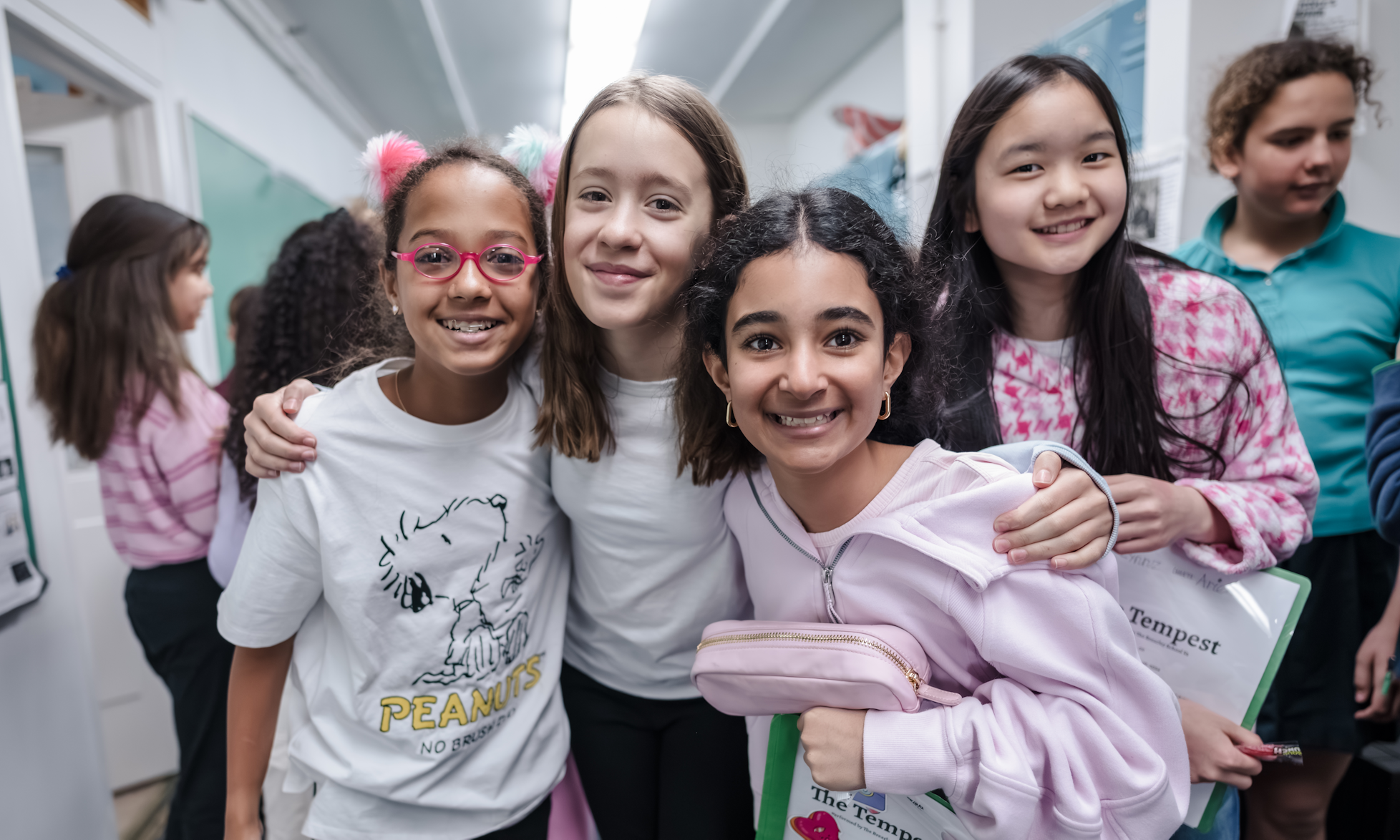
People
Just as “there is no one Brearley girl,” there is no one Brearley teacher, parent or alumna. These people with whom a child learns, plays, works and lives during her time at Brearley contribute fundamentally to her education. Their influence, devotion and wisdom stay with her for life. Our School attracts those who believe in the power of girls’ intellect, and they, in their identities and practice, are a multidimensional, multifaceted group. We prize this diversity, and it is the foundation of the community of mutual concern which we strive to build. This community, guided by our shared values, is an essential element in preparing students for life beyond our walls, where our students will need the skills to lead purposefully and thrive in years to come.
How does the composition of the student body further the mission of the School?
With the advent of our campus plan, growth in enrollment and aspiration of building a community where all members feel a sense of belonging, it is an opportune time for the School to study the composition of the student body to ensure that it furthers the mission of the School. Who are the students who attend Brearley today? How did they learn about the School? How might the School cast its net more broadly to attract students who would benefit from and contribute to our community?
Strategic Objectives:
Study and determine optimal short- and long-term enrollment plans with respect to admission criteria, composition of the student body and shifts in the New York City independent school market.
Refine the recruitment, orientation and student support plan and a financial aid model to support the School’s ability to enroll the student body that has the most to offer our community and the most to gain from a Brearley education.
How can the School instill in its students an understanding of the purpose of a Brearley education?
A Brearley education endeavors to develop a love of learning, to learn to care for oneself and one’s communities, to prepare for college, and to serve for the greater good with integrity, courage and empathy. How can the School impart this sense of dual responsibility to oneself and something greater than oneself through its program?
Strategic Objectives:
Provide perspective to students in age-appropriate ways about the rarity and privilege of attending a school with Brearley’s resources.
Instill in students that there is much they can do, even at a young age, to make a difference in the lives of others.
Provide opportunities for students to learn about the inequities that exist and ways their skills can address community issues.
Offer Brearley students opportunities to prepare for and engage in community and public service, including elected office.
How do the composition and skills of the Brearley faculty and staff further the mission of the School?
Prioritizing what is best for students means, in part, that we create and maintain a talented and intentionally diverse environment of adults and students through recruitment, retention and development strategies. The dedicated adults on the Brearley faculty and staff represent the School’s values and mission on a daily basis. It is through their teaching, support of student achievement and well-being in and outside the classroom, upkeep of the physical plant, and management of financial and institutional planning that Brearley can best serve the needs of today’s and tomorrow’s students. The breadth of their responsibilities and competencies has grown rapidly in the past few years in response to the needs of their students and expectations for student skills in the academic realm and workplace.
Strategic Objectives:
Recruit, hire, develop and sustain talented faculty from diverse backgrounds who have expertise or who are committed to developing expertise in essential areas of a Brearley education: competence in their academic discipline, passion for teaching Lower School or across divisions, facility in working with diverse student populations, dedication to ongoing professional growth, ability to collaborate with colleagues in developing curriculum.
Maintain Brearley’s leadership position in compensation.
Establish professional milestones for faculty and staff that align with the School’s values and belief statements and the needs of today’s Brearley students.
Update faculty evaluation process that clarifies common expectations, provides an annual review and emphasizes professional growth so individuals can build their competencies in service of fulfilling the School’s mission.
Create a staff evaluation process that clarifies common expectations, provides an annual review and emphasizes professional growth so individuals can build their competencies in service of fulfilling the School’s mission.
Create a transparent model for full-time faculty positions that recognizes the extent of teachers’ responsibilities in and out of the classroom.
Continue to refine the 360° administration evaluation model with emphasis on area specific objectives and goals.
Provide opportunities for the development of leadership among adults in all areas of the School in service of our own program and those of other institutions.
How can parents actively support their child�’s experience at the School and the School’s mission?
Brearley parents represent the rich diversity of the student body, which is an essential component of the School’s culture and excellence. We know that the diversity of the school community is one of the principal reasons families choose Brearley. Creating a community of mutual concern among its intentionally diverse members is a priority of the School.
Strategic Objectives:
Orient families, new or existing, to community values and the school mission.
Nurture stronger bonds among parents, in partnership with the Parents’ Association and Parent Equity Committee, within and between classes and divisions to enhance the network of support for students and deepen the sense of belonging for all families.
Support the Parents’ Association in its efforts to create and engage a diverse group of volunteer representatives.
Provide guidance on how parents can effectively communicate and partner with the School and advocate for their children.
How can the School strengthen its connection with alumnae in service of the next generation of Brearley students and the greater good?
The experiences of alumnae in and out of the classroom continue to shape the School’s strategic vision and have led to new programs in social-emotional learning, health and wellness, and diversity, equity, inclusion and, most recently, antibias/antiracism. Alumnae also serve as frequent assembly speakers on current events, the transition to college and public service. Moving forward, the School seeks to broaden and deepen these relationships.
Strategic Objectives:
Highlight in the School’s communications and in school-run events the rich and meaningful alumnae contributions and experiences in the world to reflect an accurate representation of women’s lives in the 21st century.
Continue the recent emphasis of connecting alumnae more closely with students across the School through ongoing relationships with student clubs, by inviting them to serve as guest lecturers in classrooms, and by inviting them to speak at assemblies.
Continue to invite feedback through surveys of recent alumnae on the impact of Brearley’s curricular and co-curricular programming.
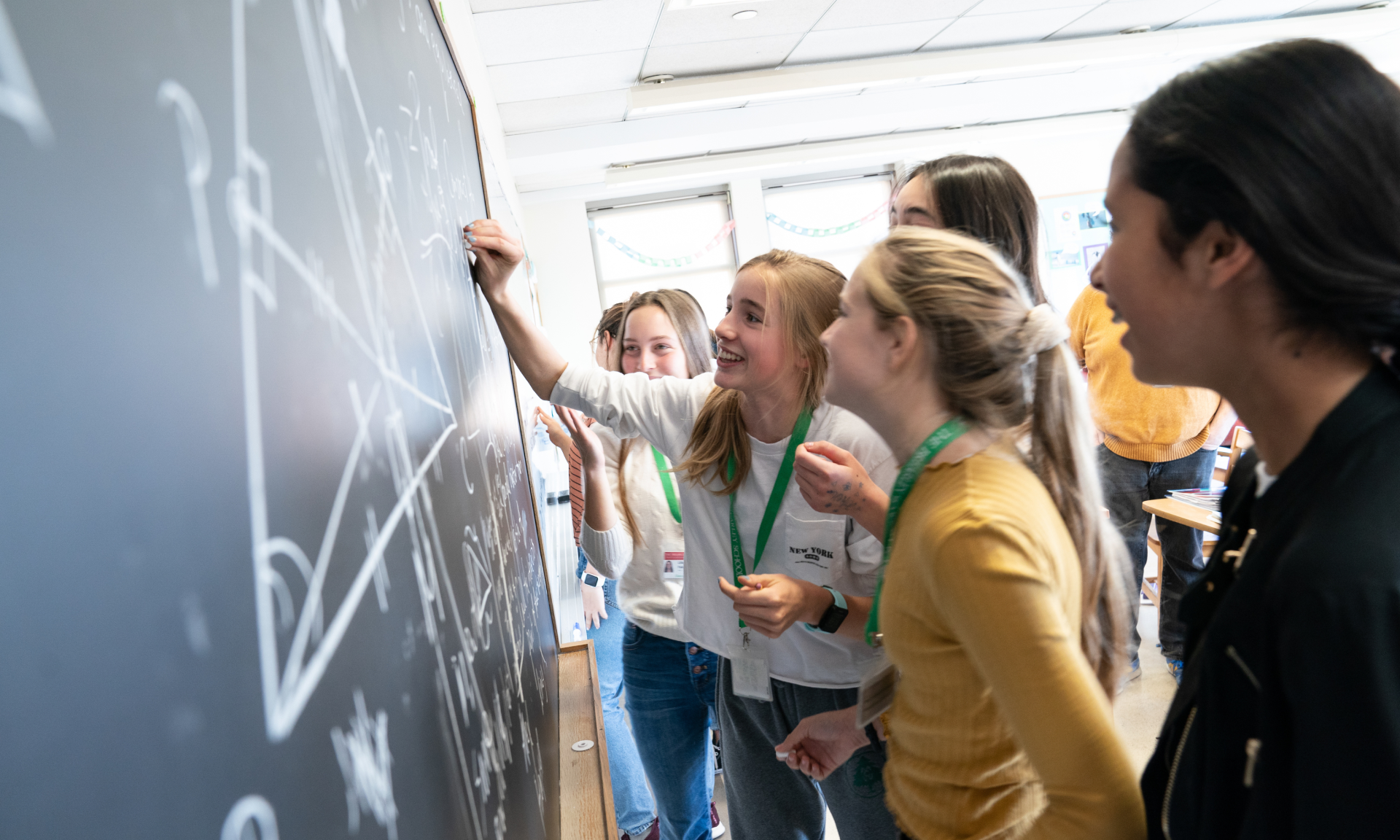
Program
Brearley’s program, both curricular and co-curricular, stands firmly upon a foundation built over generations. It is also dynamic, reviewed and revised every year as it must be if it is to serve a community whose purpose is inextricably linked to the world beyond our walls. Changes to it align with our statements of belief and our understanding of the intellectual, emotional and physical development of our students. We will continue to build on the work initiated in Opening Doors (2014) to enhance programming in technology, like STEM and computational thinking, DEIA, and health and wellness while also affirming our commitment to the humanities and the liberal arts.
Brearley students are amateurs in the best sense of that word—they passionately pursue their interests and are eager to learn more, whether about photography or journalism, drawing or neuroscience, robotics or debate. The co-curriculum at Brearley includes a wide range of opportunities, both those that have been in place and those that respond to new needs and interests of students. The goal is to help students understand what it means to be their best selves, to feel a sense of belonging at the School, and to grow as strong, independent young adults who act with courage and integrity and a commitment to the greater good.
How does Brearley’s academic program prepare our students for lives of meaning and fulfillment and for contributing to the greater good?
Strategic Objectives:
Reaffirm that the curriculum prepares students for success and leadership during their time at school and in future pursuits.
Ensure that the academic program enhances students’ understanding of the School’s values and builds their skills in integrity, courage, empathy, inclusion, self-advocacy and independence.
How do we ensure Brearley’s academic program challenges the students of each new generation to think critically and creatively?
Strategic Objectives:
Conduct divisional program reviews to prioritize cross-divisional, grade-level and subject team collaborations.
Clarify expectations across departments at each grade level to identify and enhance areas within the program where students need to build skills or extend their learning.
How do we ensure that Brearley’s co-curricular programs speak to Brearley’s mission statement?
Strategic Objectives:
Consider the current K–XII co-curricular program with respect to the offerings and how they support not only student interest and individual achievement, but also a commitment to the greater good.
Enhance the program to teach integrity, courage and empathy, instill a sense of purpose and belonging, promote student wellness, and further the School’s progress towards antibias/antiracism.
How can we ensure that teaching computational thinking both stands alone as an initiative and is integrated across Brearley’s academic and co-curricular programs?
Strategic Objectives:
Investigate the teaching and rigor of the computer science curriculum across divisions, with a particular focus on Classes VII–X.
Review the K–XII schedule for opportunities to introduce and enhance the teaching of computational thinking across disciplines.
Bolster Brearley’s immersive summer technology programming, emphasizing inclusivity of enrollment opportunity as well as need-blind admission.
How can Brearley better prepare students to be responsible digital citizens?
Strategic Objectives:
Review the current programming on digital ethics, including using artificial intelligence, consuming online media, monitoring digital footprints, securing online privacy and sharpening research skills in a digital age in order to ensure a unified and comprehensive approach.
Through schoolwide programming, educate students about the impact of social media on their mental health and the benefits of spending less time online and connecting in person with peers.
Partner with parents in providing education around home structures that create healthy technology boundaries and strategies.
How do our building renovations support Brearley’s academic and co-curricular programs and mission of the School?
Strategic Objectives:
Center the student experience in the renovation of spaces in 610.
Increase community access by identifying and working with neighborhood partners in need of Brearley’s facilities for use pro bono.
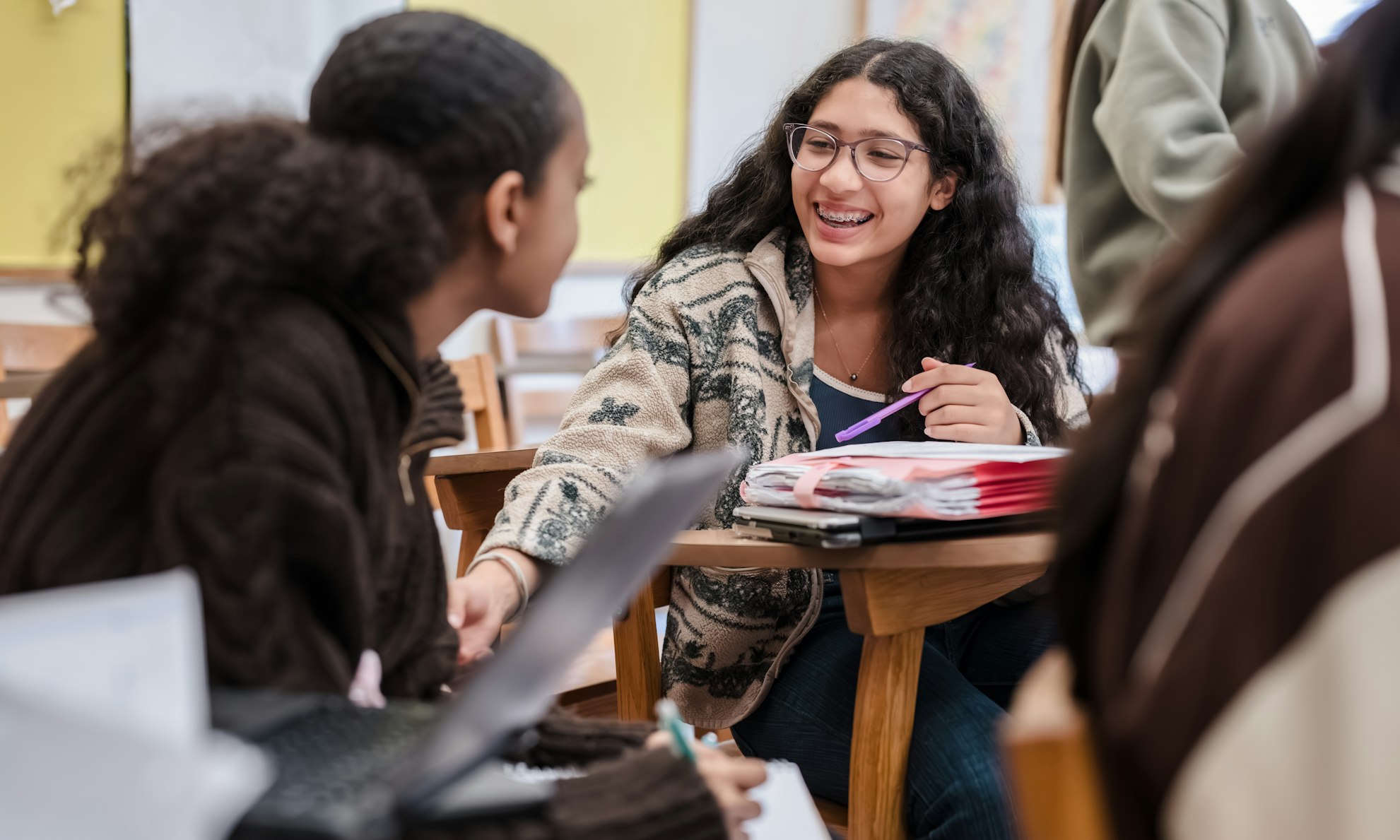
Sustainability
This section addresses strategic considerations related broadly to sustainability. Though seemingly disparate ideas, environmental, facilities and financial sustainability are interconnected in important ways. We are fortunately well positioned to think and act strategically as we make sustainable decisions.
The Environmental Sustainability section explores how, as a place of learning and teaching, we will grapple with local and global concerns about the best practices for our environment and planet through both curricular and co-curricular initiatives, particularly as they relate to our consumption of resources.
In terms of Facilities Sustainability, we have significantly expanded and enhanced our facilities with the addition of the 590 building to our campus and the coming renovations to 610. We realize that with this expanded footprint and more air-conditioned spaces, we are consuming more energy and producing more waste. This section explores how we will design and build exceptional learning environments that are comfortable, healthy and enjoyable, all while achieving resource efficiency and cost effectiveness.
Finally, the Financial Sustainability section addresses how we can support the other two sustainability initiatives in the context of our broader needs. In terms of our program, we are operating from a position of strength: excellent academic program; low student-to-faculty ratio; competitively compensated faculty and staff; strong demand in admissions; relatively low tuition; generous financial aid; and relatively high levels of nontuition revenue, driven largely by our endowment. We also recognize that there is an inherent tension in the long-term sustainability of our model—between the very things that make ours such an extraordinary program and our desire to remain affordable. Some of our environmental and facilities sustainability initiatives will require additional resources, some will be budget neutral and others will create savings in the long term. We will contemplate how to maintain a delicately balanced equilibrium while also providing adequate resources to support our commitment to environmental and facilities sustainability.
To help ensure Brearley remains on a sustainable path with our mission of working for the greater good kept in mind, we propose the following three areas for strategic consideration:
How do the curriculum and co-curricular activities support our commitment to environmental sustainability?
Strategic Objectives:
Identify how opportunities for sustainability and environmental issues can be introduced to the curriculum and co-curricular activities.
Establish best practices for all constituents.
Consider and advocate for more environmentally sound and sustainable dining services, waste and recycling programs.
How will we design and build exceptional learning environments that are comfortable, healthy and enjoyable, all while achieving resource efficiency and cost effectiveness?
Strategic Objectives:
Ensure that our building projects are environmentally sound and constructed using sustainable building practices.
How do the “levers” in the long term (net tuition; financial aid; affordability; enrollment management; nontuition revenue sources; philanthropy; HR and compensation policy; and investment practices) bolster the School’s long-term financial sustainability?
Strategic Objectives:
Employ enrollment management best practices to review enrollment targets (size and composition of the School) to ensure their ability to support the mission of the School and the program, as well as respond to changing demographics in the city and greater NYC area.
Ensure that the financial aid budget supports the school mission, talent and diversity of the student body, and future sustainability of the School.
Study and maximize nontuition and alternative revenue sources for the School that further the School’s mission and support the long-term financial sustainability of the School, including renting out our new facilities.
Establish human resource and compensation practices that forward the School’s mission and align with sustainability goals.
Create a mechanism to measure and project the impact of the new initiatives on the program, including DEIA, while maintaining financial sustainability.
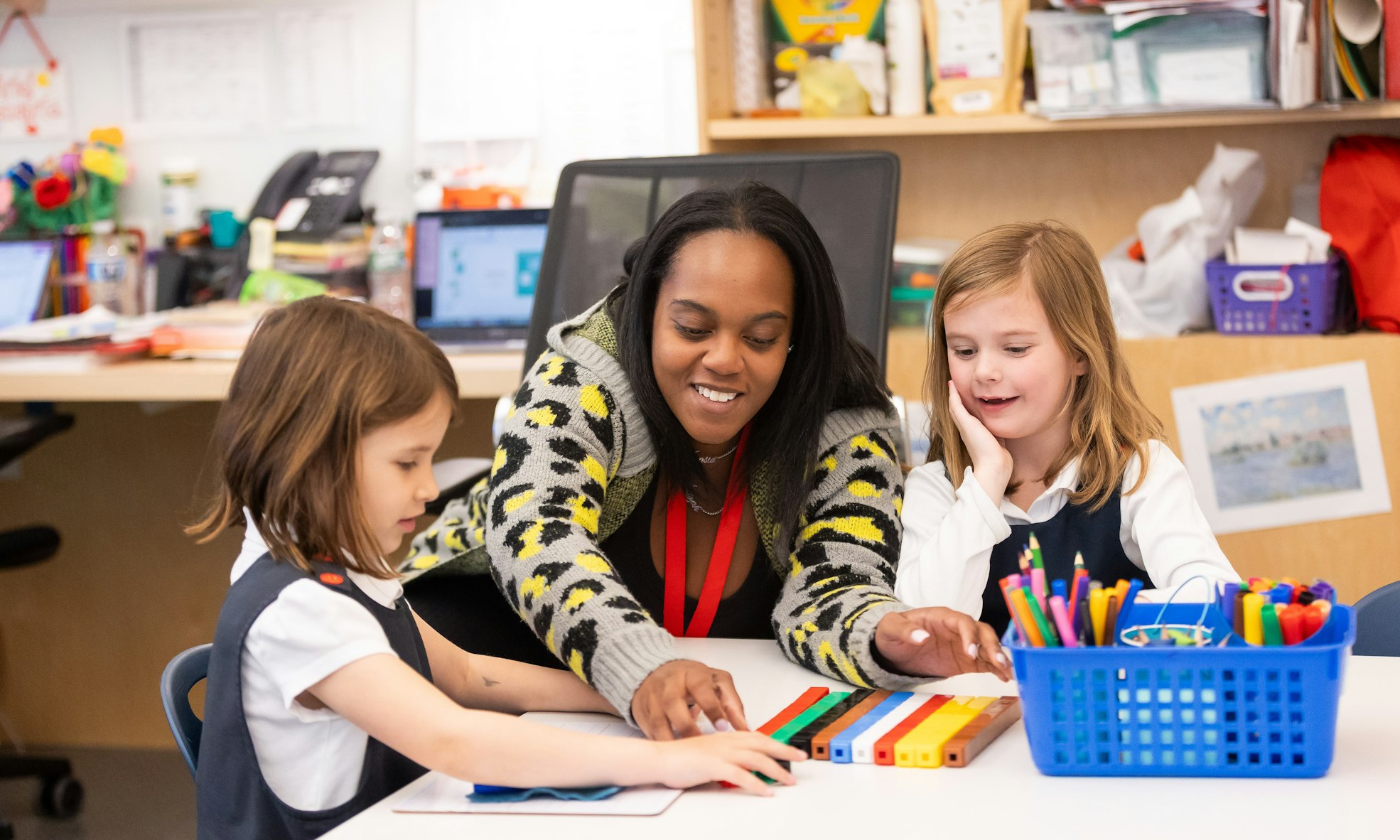
Communications
In today’s world of too much information and oversaturation of content, Brearley aspires to communicate its mission and institutional goals consistently and directly to its students, faculty and staff, parents and alumnae. The communication team strives to engender the sense of community based on mutual concern through its messaging.
How can communications improve the understanding and practice of the mission and values of the School, including the DEIA program, by its various constituencies?
Strategic Objectives:
Align all elements of communication to showcase the uniqueness of the Brearley experience. Position the School, via branding, collateral and messaging, to focus on the “special sauce” that makes Brearley Brearley.
Streamline and standardize the language and methods that we use to communicate our values and to position the School as a welcoming institution for all, providing a meaningful educational experience that prepares girls to contribute to the greater good in a variety of roles.
Manage the flow of information better to community members (students, faculty and staff, parents).
Improve touchpoints with our alumnae and former faculty and staff, particularly around processes for communications.
Examine preferred methods of communication for various constituencies; for example, can we switch to all-digital publications? Should we continue to print the Bulletin (keeping in mind sustainability, etc.)? How do we address the generational divide?
Exchange knowledge with other schools by presenting at state and national conferences and/or create local opportunities for Brearley and other schools to share their work.
